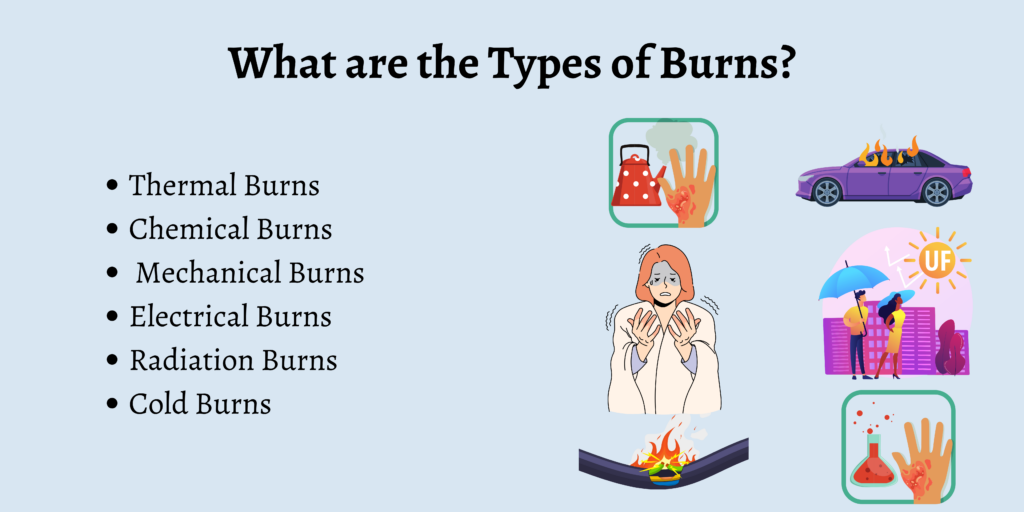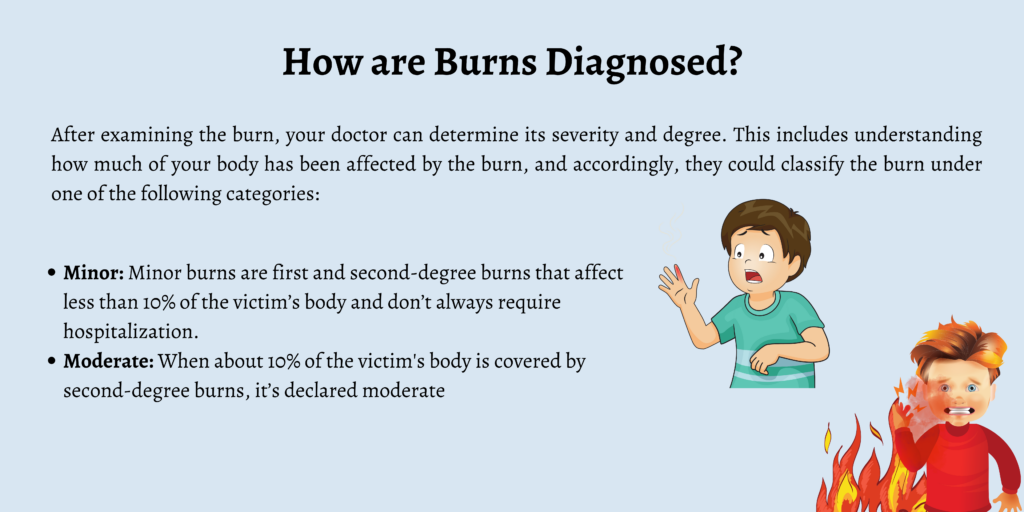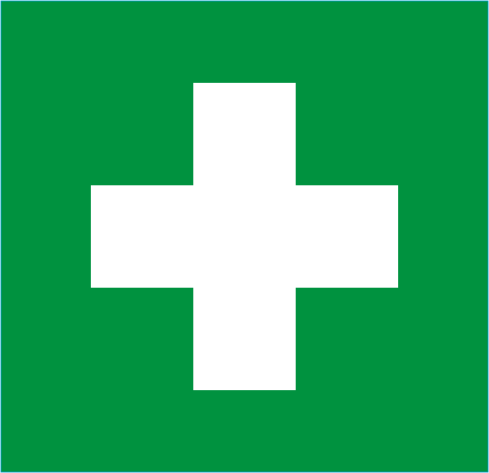What Are The Different Types of Burn Injuries?
A burn can be defined as an injury to the skin or other tissue as a result of heat, radiation, friction, chemicals, or radioactivity. Burns can either be life-threatening or minor medical issues.
The treatment of a burn is based on the severity of the damage caused to the patient and the location of the injury. While certain types of burns, such as small scalds and sunburns, can be treated through first aid, the deeper burns require emergency medical care.
Burns can happen to anyone at any given time. However, the individuals who are at a bigger risk of experiencing burns are older citizens, teenagers, and children.
While older citizens can have burns due to activities such as cooking, younger individuals could experience them from playing around with fireworks, matches, and lighters.
In this article, we will be elaborating on what are the various kinds of burns, how common they are, how they’re diagnosed, and so on.
How Common Are Burns?
About half a million individuals in the United States reportedly visit the emergency department annually to treat burn injuries. Accidental burns are a bigger risk among children. Over 300 children are treated for burn injuries in the emergency department daily.
The Classification of Burns
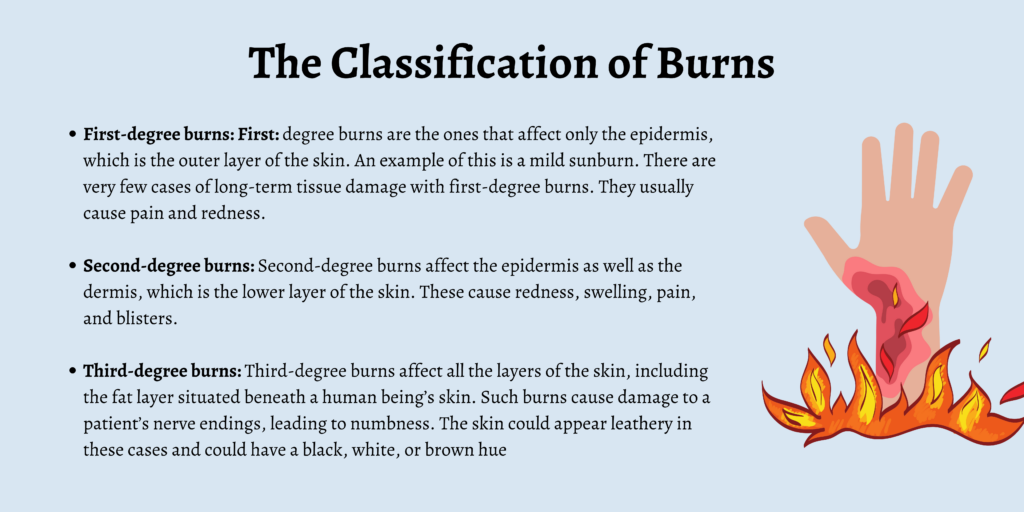
Burns are categorized based on the degree of their severity. The main types of burns are as follows:
- First-degree burns: First-degree burns are the ones that affect only the epidermis, which is the outer layer of the skin. An example of this is a mild sunburn. There are very few cases of long-term tissue damage with first-degree burns. They usually cause pain and redness.
- Second-degree burns: Second-degree burns affect the epidermis as well as the dermis, which is the lower layer of the skin. These cause redness, swelling, pain, and blisters.
- Third-degree burns: Third-degree burns affect all the layers of the skin, including the fat layer situated beneath a human being’s skin. Such burns cause damage to a patient’s nerve endings, leading to numbness. The skin could appear leathery in these cases and could have a black, white, or brown hue
What Causes Burns?
Burns can be caused due to many things, and some of them are:
- Fire
- Electrical current
- Sunlight or any other sources of UV radiation, including tanning beds
- Hot metal
- Chemicals (drain cleaners, acids, gasoline, and paint thinners)
- Radiation
- Hot steam or liquid
What Are The Types of Burns?
With burn injuries there are five heat categories: thermal, chemical, mechanical, electrical and radiation.
Thermal Burns
This source is divided into two categories, dry thermal and wet thermal injuries. Dry thermal will involve flames, very hot objects, and radiant heat. Wet thermal will involve steam and hot liquids (Steam has the capacity to carry 4000 times more heat than dry air). Inhalation of hot smoke or gases will cause the airways to swell and could result in a compromised airway.
When managing dry thermal injuries burnt clothing, and foreign objects adhering to the burn location must not be removed. The body’s defence mechanism will start to send fluids to the site, causing oedema, if there is a concern that constrictive clothing, jewellery or footwear will prevent circula- tion to and beyond the location, remove the constricting item.
Wet thermal injuries are caused by hot liquids such as boiling water, coffee, tea, soup, chip pan oil, tar, molten liquids. If clothing is saturated it will have to be cooled (to protect the rescuer) and carefully removed, otherwise it will continue to act as a heat source. If possible try not to burst underlying blisters. With an exposed scald injury immediate cooling can be started.
Symptoms of Thermal Burns
The symptoms of thermal burns include:
- Swelling
- Blisters
- Peeling skin
- Pain
- Skin that’s white, charred, or red
Chemical Burns
The source for this category is all chemicals both wet and dry, alkalis and hydrocarbons and phenols (industrial cleaners, solvents, degreasing agents, petrol). Chemical burns are not usually thermic, but are caused by tissue reaction to noxious substances, the amount of tissue damage will depend on the chemical and exposure time. Full irrigation of all liquid chemical burn sites must take place prior to cooling, large amounts of flowing water will be required to wash away and break down the liquid chemical or chemicals in question. It is worth considering using warm water for irrigation as this will help to protect the core temperature of the patient. If possible, remove all saturated clothing, footwear, watches and jewellery from the patient.
Symptoms of Chemical Burns
Some of the symptoms of chemical burns are as follows:
- Pain
- Redness
- Swelling
- Discoloration of the skin
- Scabs or blisters
- Dry and cracked skin
- Chest pain
- Drooling
- Cough
- Shortness of breath
- Vomiting and nausea
- Blurry vision
Mechanical Burns
Mechanical burns are caused when a person’s skin gets scraped off after coming in contact with hard objects such as the floor or the road. The combination of heat, blunt trauma, and high speed makes mechanical burns worse.
As the abrasive surface meets the skin, it results in blisters, burns, and deep wounds. These are usually a combination of thermal burns as well as abrasions.
Symptoms of Mechanical Burns
The symptoms of mechanical burns are:
- The area appears red
- Swelling
- Itchy skin
Electrical Burns
Patients in this category will usually have been in contact with one of the following two sources of electricity: alternating current (AC) or direct current (DC). Electrical injuries can be classified into three groups: true electrical injury, arc burn and electrical thermal burn. True electrical injury occurs when electricity passes through the body after contact with an electrical conductor. This burn will present the classic entry and exit wounds, along with deep tissue destruction. With an arc burn, the victim is not in actual contact with electricity. These injuries are most common with high tension current. There may be an entry and exit wound. Usually there are scattered spots of injury where the current made momentary contact as it jumped to ground.
Cardiac complications should always be considered when called to an electrical burn injury, on arrival make sure that the power supply is disconnected at the mains before approaching the patient having ensured that the scene is safe.
Symptoms of Electrical Burns
When a burn is caused due to an electrical current, it’s known as an electrical burn. The symptoms include:
- Tingling sensations
- Weakness
- Headaches
- Lightheadedness
- Seizures
- Irregular heart rhythm
- Confusion
Radiation Burns
Radiation burns happen when someone is exposed to the sun’s UV rays for a long period of time or due to other radiation sources. It can also occur due to the radiation therapy that cancer patients go through.
Such radiation burns are most commonly seen in those who receive radiation therapy for neck, head, breast, and skin cancer. This is also known as radiation dermatitis, and the symptoms are usually easy to treat.
Symptoms of Radiation Burns
The symptoms of radiation burns are:
- Blisters
- Itchy skin
- Skin that is dry and peels
- White skin turning red and brown or black skin getting darker
- Open sores
- Swelling
Cold Burns
Cold burns take place when a person is exposed to ice for prolonged periods. These shouldn’t be confused with frostbite, as those occur when an individual’s body witnesses extremely low temperatures for long periods.
When a person experiences a cold burn, the water in their cells slowly begins to freeze. This is then followed by a constriction of the blood vessels, which can also result in blood clots.
Symptoms of Cold burns
The symptoms of cold burns are:
- Blisters
- Tingling
- Pain
- The affected area turning dark, grey, or red
The depth of burns can be categorized as following:
Superficial Burns
Superficial burns are another name for first-degree burns, and the symptoms under this category are as follows:
- Swelling
- Pain
- Redness
- Soreness
- Dry skin
- Skin peeling
- Itching
Superficial burns usually heal in about a week, and the treatment for them may include:
- Over-the-counter pain medicines such as ibuprofen
- Ointments and lotions
- Cold compresses
Partial Thickness Burns
This category can be divided into two sections – superficial partial thickness and deep partial thickness burns. Superficial partial thickness burns involve the epidermis and dermis, it will often be bright red, blistered and painful. These burns can take up to 21 days to heal usually with no scarring. Deep partial thickness burns will include all of the epi- dermis, and deep into the dermis, the site of insult may be dry or wet, and capillary refill will be reduced, sensation to pressure remains intact, and the site is less painful. These burns take a long time to heal and may result in scarring if not excised and grafted.
Full Thickness Burns
These burns will involve all layers of the skin, and possibly subcutaneous fat, muscle, and bone. They may appear as charred, waxy, mottled, leathery, pale and dry, and will be firm to the touch. These burns are in a semi-anaesthetized state and will not be sensitive to pain and light touch, they will require advanced medical intervention and hospitalization.
How Are Burns Diagnosed?
After examining the burn, your doctor can determine its severity and degree. This includes understanding how much of your body has been affected by the burn, and accordingly, they could classify the burn under one of the following categories:
Minor
Minor burns are first and second-degree burns that affect less than 10% of the victim’s body and don’t always require hospitalization.
Moderate
When about 10% of the victim’s body is covered by second-degree burns, it’s declared moderate.
Severe
Severe burns are the ones that affect over 1% of the victim’s body, as is the case with third-degree burns.
First Aid For Burns
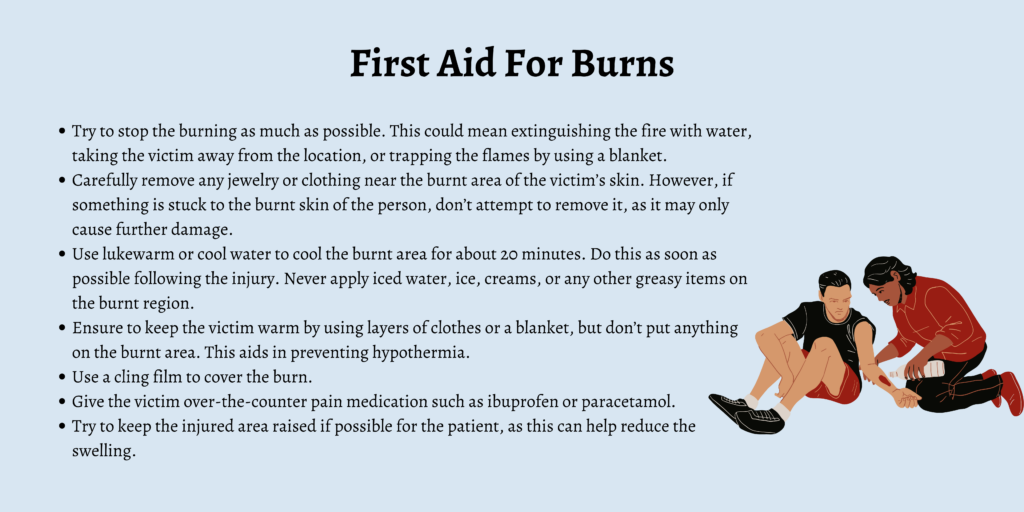
When someone experiences burns of any category, take the following steps to provide first aid:
- Try to stop the burning as much as possible. This could mean extinguishing the fire with water, taking the victim away from the location, or trapping the flames by using a blanket.
- Carefully remove any jewelry or clothing near the burnt area of the victim’s skin. However, if something is stuck to the burnt skin of the person, don’t attempt to remove it, as it may only cause further damage.
- Use lukewarm or cool water to cool the burnt area for about 20 minutes. Do this as soon as possible following the injury. Never apply iced water, ice, creams, or any other greasy items on the burnt region.
- Ensure to keep the victim warm by using layers of clothes or a blanket, but don’t put anything on the burnt area. This aids in preventing hypothermia.
- Use a cling film to cover the burn.
- Give the victim over-the-counter pain medication such as ibuprofen or paracetamol.
- Try to keep the injured area raised if possible for the patient, as this can help reduce the swelling.
Complications of Burns
Certain complications often accompany burn injuries, and they include:
- Scarring: The risk of scarring can be reduced by using sunscreen on the affected area every day or through the application of an emollient.
- Infections: Wounds from burns could get infected, and one should immediately call for medical care if their burn injuries have blisters that could turn into infections.
- Heatstroke and heat exhaustion: If you’re experiencing a heat stroke or heat exhaustion, you could have headaches or experience muscle pain, confusion, and dizziness.
- Shock: It’s possible for a person to go into shock after experiencing a burn injury. The signs of shock, in this case, would include yawning, clammy skin, and shallow breathing.
Burn Rehabilitation Program
A burn rehabilitation program is initiated by your doctor and healthcare team during the initial phase of your treatment. It can last for days, months, or even years, depending on the severity of the burn. Such programs are divided into two stages, namely:
Inpatient Therapy
Inpatient therapy is the process that begins when the patient is admitted to the hospital and it goes on till the last day of their hospital stay. While the stage of acute care is ongoing, the healthcare providers attempt to:
- Start scar management.
- Ensure the range of motion isn’t lost
- Reduce the swelling in the affected area
- Inform the patient and their family members regarding the problems related to burn injuries.
Once the burns begin to heal, the patient will witness scar management through soft-tissue massages and range-of-motion exercises.
While the victim is in the early stage of recovery, an occupational therapist will manage the issues related to the upper body, and a physical therapist will deal with the lower body.
Outpatient Therapy
Outpatient therapy is part of the rehabilitation program that begins once the patient is discharged from the hospital. It’s imperative that the patients diligently follow the exercise routines suggested by their rehabilitation therapist.
Scar management could also be continued during this stage, and there can be different activities and tasks involved in outpatient therapy. As the adjustment period often involves problems for many victims, visiting the clinic regularly helps identify these issues early on.
How to Prevent Burns?
Although burns happen due to accidents, here are some ways in which you can prevent burns from your end:
- Always remember to put on sunscreen.
- Don’t hold or carry your child or any kid while cooking near the stove or while being near any other hot objects.
- Ensure that the electrical appliances don’t come in contact with water.
- Make sure that your pets and kids can’t reach the hot liquids kept at home.
- Never leave the stove unattended when something is cooking.
- Re-check the clothing material you have on while being near a stove.
- Before your child enters the car, see to it that the buckles or straps aren’t hot.
- Do not smoke in bed.
- Keep all the electrical items unplugged when they’re not in use and keep them away from the reach of children.
- Smoke detectors should be present on every floor of your house. Change their batteries every year.
- Keep a fire extinguisher in your apartment.
- Always have protective clothing and gear on when coming in contact with any sort of chemicals.
- Keep all your electrical outlets covered and ensure all the lighters, chemicals, and matches are covered.
FAQs
1. What causes burns?
Burns can be caused due to chemicals, radiation, hot metal, fire, and hot liquid, among other things.
2. What are the different types of burns?
The different types of burns include first-degree, second-degree, and third-degree burns.
3. What are the symptoms of burns?
Some of the symptoms of burns include pain, blisters, swelling, peeling skin, and charred or white skin.
4. Are burns common?
Burns are quite common. About half a million individuals in the United States face burn injuries yearly.
5. How to prevent burns?
A couple of the ways to prevent burns are keeping smoke detectors in your home, installing a fire extinguisher, keeping your kids away from electrical appliances and hot items, and applying sunscreen every day.
Conclusion
There are certain complications associated with widespread and deep burns, such as:
- Bacterial infections lead to infections in the bloodstream
- Breathing issues by inhaling smoke or hot air
- Loss of fluids, which can also lead to low blood volume or hypovolemia
- Body temperature getting severely low (hypothermia)
- Problems in the joints or bones
When proper treatment is provided, first-degree and second-degree burns usually heal in about two to three weeks. A patient could have scars based on the severity of the burn, which go away with time.
The ones who suffer from third-degree burns could require occupational and physical therapy to improve the movement of their joints. Make sure to stay alert even when you’re outside to prevent the risk of burns, including being careful when you’re exposed to chemicals and open flames.
Enjoyed this blog post? Why not take one of our FREE online first aid courses?

